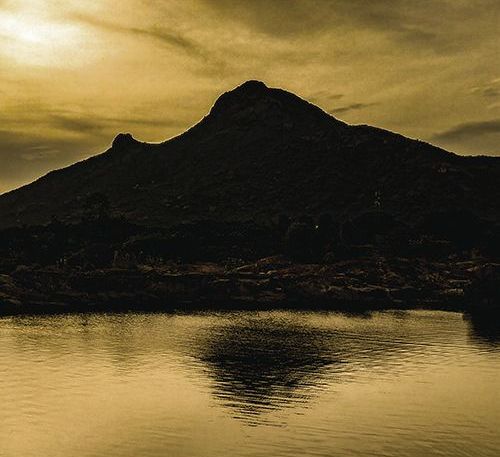The culmination of the festival of Navaratri is Vijayadashami also known as Dussehra (i.e. "remover of bad fate") which symbolises the Victory of Good over Evil, which this year falls today October 6, 2011.
The name Durga which means; "inaccessible", "invincible"; or "one who can redeem in situations of utmost distress" is a form of the Devi which is considered the fierce, demon-fighting form of Shiva’s wife, goddess Parvarti.
A narrative describing the victory of good over evil, is that of Goddess Durga fighting an asura named Mahishasura as appears in the Devi Mahatmya in the Markandeya Purana. More well known in these parts is the story of Goddess Durga’s battle and defeat of the demon as set down in the Skanda Purana (this legend appears in the below narrative).
Fight with Mahishasura
In this narrative Brahma relates how the demon Mahishasura was attracted to the beautiful Goddess Parvati and how he was lured to meet his end.
The devas, oppressed by the demon Mahishasura, who had taken the form of a buffalo, came down to earth and took refuge in the Goddess. They piteously told her about their sufferings and how they lived in fear and were compelled to obey all Mahishasura’s commands. They could do nothing, as the demon Mahishasura was invincible having obtained a boon from Siva that no man could kill him.
Hearing their cry of fear, the Goddess assured the devas of her protection and vowed to kill the great asura by strategy. Hearing such words of assurance the devas returned in peace to their abode. After they had left, Parvati manifested herself as the resplendent delusion Mohini (enchantress) and appointed four Bhairavis to keep watch on all four sides of Arunagiri, ordering them to admit only those who came to worship Arunachala and were tired, hungry and thirsty. Then after appointing strong men to guard the boundaries of Arunachala, extending to two yojanas (24 kilometres) the Goddess continued her penance at the ashram.
While Parvati was engaged in penance, there was no type of distress at all. The rains were plentiful, crops grew and the trees bore abundant fruits. Animals antagonistic to one another gave up their previous animosity, and neither external nor internal enemies prevailed. All the sages became content and praised the Goddess, who day and night continued to perform severe penance.
One day the demon Mahishasura, far from his own place, entered the forest of Arunachala whilst hunting animals. The animals then took refuge in the ashram of the Goddess and the asuras, chasing them, were denied entrance as it was a place of penance for Parvati. After entering the ashram, disguised as birds, the asuras seeing the Goddess soon returned to Mahisha praising her enchanting beauty. The demon, stricken with lust, disguised himself as an old man and entered the ashram, where he was told that the maiden of the ashram was doing penance in order to obtain a valiant husband, capable of performing great deeds.

After Mahisha spoke of his glories, the Goddess said she would become the wife only of a valiant man: ‘If you are such a man, display your strength. If you fail, admit that you are weak.’
On hearing these words Mahisha became enraged and sprang towards the Goddess with the object of killing her. At his approach Parvati transformed herself into Durga, the fiery and invincible Goddess. On seeing this, the demon made himself into the size of a mountain and gathered his vast armies from all quarters. But the Goddess was offered weapons and missiles by Brahma, Visnu, Siva, the dikpalakas, devas, mountains and seas. With many hands blazing due to the multitudes of arms, missiles and weapons, Durga, the great Maya, wore a coat of mail and immediately rode on her vehicle, the lion. Unable to bear her effulgence and seeing her terrible form, the demon Mahisha fled.
Knowing that the wicked Mahishasura could only be killed by subterfuge, the Goddess sends a monkey-faced muni named Suraguru to the demon. The demon becomes enraged on hearing the muni’s message from Parvati of abandoning adharma and following the path of righteousness. Thereafter the demon, gathered his armed forces and surrounded Arunagiri. The ensuing battle ended when the Goddess pierced the demon with her trident and cut off his head.
*********
After having killed the Demon, a lingam adhering to the Demon's neck when taken by the Goddess remained welded to the palm of Durga’s hand. The Goddess then went to a place which legend has it is now situated in the compound of the Durga Amman Temple at the foot of Arunachala. The area was dry, but the Goddess dug a hole with her sword and water gushed forth. When she took a bath, the lingam came off her hand and Durga started worshipping it.
The Goddess remained and bestowed her favours on her devotees. Since then, the sacred tank has had a regular water inflow. It is at this Temple that great celebrations take place in honour of Durga during the days of Navaratri and Dussehra – which symbolise the victory of the Goddess over evil.


















